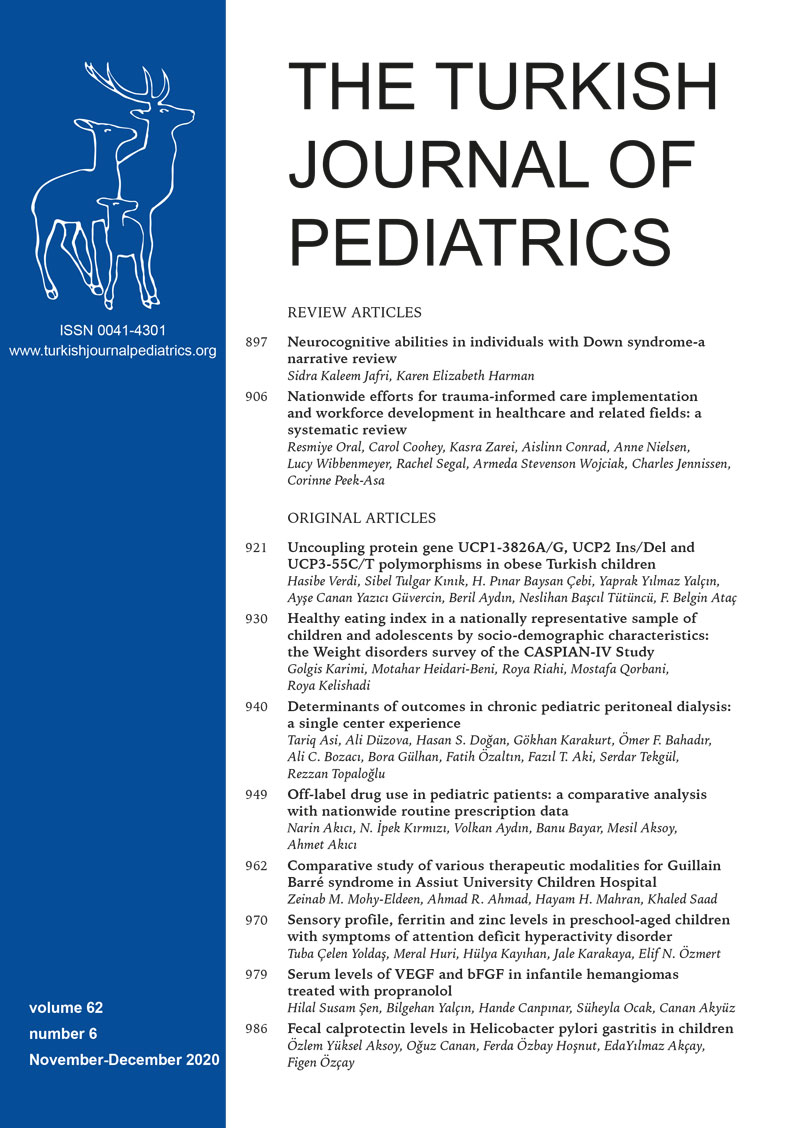Abstract
Background. Children constitute a special population for off-label drug use (OLDU), yet limited drug-focused data exist regarding pediatric OLDU in clinical practice. This study aimed to investigate pediatric OLDU practice and compare it with pediatric drug utilization patterns of routine prescribing data.
Methods. This cross-sectional study examined all approved pediatric OLDU applications, compared with electronic prescription data on national Prescription Information System of Turkish Medicines and Medical Devices Agency in 2015. OLDU applications and prescriptions were analyzed for demographic characteristics, healthcare/socioeconomic indices as well as details of drugs and diagnoses.
Results. We found 7,896 OLDU applications and 7,029,512 prescriptions for the pediatric population in 2015. OLDU applications and prescriptions were mostly practiced for `2-11-year-old` children (52.7% vs. 63.4%, respectively; p < 0.01). OLDU applications and prescriptions were detected to have a positive correlation with socio-economic development index (r = 0.45, p < 0.0001 and r: 0.40, p = 0.0002; respectively) and the physician density (r = 0.66, p < 0.0001 and r: 0.43, p < 0.0001; respectively). In addition, OLDU was also positively correlated with the number of hospital beds per province (r = 0.39, p = 0.0003). Antineoplastic/immunomodulating agents were the most commonly applied drug category in OLDU (47.0%), compared with respiratory system drugs (36.6%) in routine prescribing. Eculizumab (6.5%), mycophenolate (5.6%), and canakinumab (4.4%) were the top drugs used as off-label. OLDU applications and routine prescription data revealed the most frequent diagnosis as `I27-other pulmonary heart diseases` (7.4%) and `J06-acute upper respiratory infections` (12.6%), respectively.
Conclusions. This is the first nationwide study to show indication- and drug-centered aspects of pediatric OLDU and prescribing practice. Though OLDU applications is overall consistent with routine clinical practice in terms of demographics and institutional capacity, substantial variations exist regarding main drug classes and diseases. Our findings are expected to shed light on interventions focused on improving `indicated` pediatric use of drugs currently applied as off-label.
Keywords: antineoplastic, children, immunomodulating, off-label drug use, prescribing
Copyright and license
Copyright © 2020 The Author(s). This is an open access article distributed under the Creative Commons Attribution License (CC BY), which permits unrestricted use, distribution, and reproduction in any medium or format, provided the original work is properly cited.














